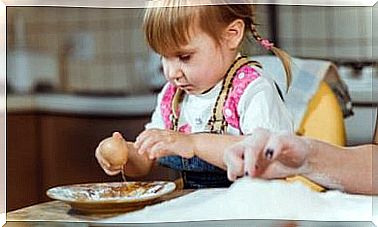The Pros And Cons Of Breast Milk

Breast milk is fundamental for babies and it is an important choice when it comes to their health. Therefore, we will discuss some of the pros and cons of giving breast milk.
The American Academy of Pediatrics (AAP), the American Medical Association (AMA), the American Dietetic Association (ADA), and the World Health Organization (WHO) share their views on breast milk. They recommend breast milk as the best diet for babies because it helps fight infections, avoid allergies and protect against chronic conditions. The Dutch Nutrition Center also shares this opinion.
But everything has its pros and cons. Keep reading to find out some of the pros and cons of breastfeeding.
Breast milk is good for your baby
Breast milk has many positive effects on your baby’s diet. It is recommended and practically vital to their health.
A few positives of breast milk:
- It is the best feeding option for babies. Some experts consider breastfeeding the best way for your baby to get nutrients.
- Breast milk helps fight infections and other ailments. Breastfed babies are less likely to get infections because breast milk strengthens the immune system. It also helps reduce the risk of infections such as ear infections, diarrhea, respiratory infections and meningitis.
- It is very nutritious and improves digestion. Breastfed babies have fewer digestive problems. It also contains many vitamins and minerals that are necessary for newborns.
- Breast milk has different flavors. Because we eat different meals throughout the day to produce breast milk, it can have different flavors and the baby is already introduced to new flavors.
- Several studies suggest that drinking breast milk leads to smarter children. Babies raised with breast milk have a slightly higher intellectual coefficient than babies raised with the bottle.
- Breastfeeding also benefits the mother. When a mother breastfeeds, she loses weight, feels more confident and, according to a number of studies, also has a reduced risk of breast cancer.
- Breastfeeding helps to strengthen the bond between mother and child. Some moms say that skin-to-skin contact helps form a special connection with their little one.
The Disadvantages of Breast Milk and Breastfeeding
While breastfeeding has many important benefits, it also has its downsides. Here are some drawbacks:
- It can cause some pain and discomfort. At first, a mother may experience breastfeeding pain when the baby sucks. This pain shouldn’t last more than a minute per session, but if it’s a constant pain that won’t go away you could have an infection.
- Mothers should maintain an appropriate diet while feeding. For example, it is better not to eat fish that contain a lot of mercury.
- Mothers have a less flexible schedule. If at some point you cannot breastfeed your baby, you can give a bottle to your partner or family member so that your baby can still be fed.
- More frequent feedings. Babies who normally drink bottled food need to be fed less often, as it is less digestible than breast milk.
- Mothers have to be mindful of what they eat. If you don’t breastfeed your baby, you don’t have to worry about this.
A few recommendations
- Mothers are advised to breastfeed until the baby is at least 12 months old, but they can continue longer if they wish.
- Bottle feeding is also a healthy alternative. It provides the baby with the nutrients they need to grow healthy.
- Decide for yourself whether to breastfeed or not. It is a personal choice and it is important to weigh the pros and cons.
As we said before, the choice to breastfeed your baby is entirely up to you. It is important to be informed and decide what is best for your baby’s health.









